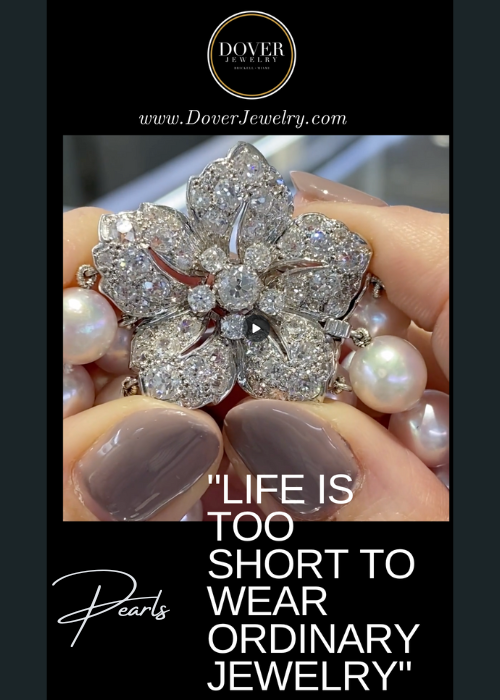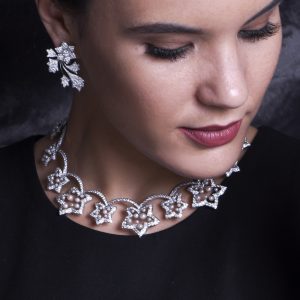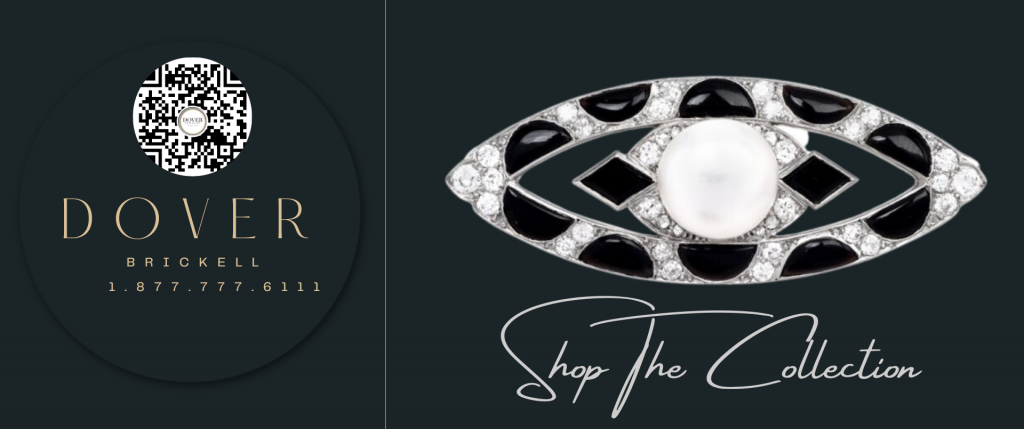
Let’s begin with the most relevant question:
What Are Pearls?
Pearls are beautiful, versatile, and can complement any outfit, from casual jeans to elegant cocktail wear. Most pearls on the market today are cultured pearls, created by introducing a small irritant into a mollusk or oyster. The mollusk forms a pearl sac, coating the seed with nacre and eventually forming a pearl.
Types of Pearls:
1. Akoya Pearls: Saltwater cultured pearls from the Akoya oyster, known for near-perfect matching with slight color and iridescence variations.
2. South Sea Pearls: Harvested in Australia, Indonesia, and the Philippines, these pearls are large, with colors ranging from white to golden.
3. Tahitian Pearls: Cultured around the French Polynesian islands, these pearls come in exotic colors like black, green, and silver.
4. Freshwater Pearls: Produced in lakes or ponds, they are less round and more affordable.
5. Natural Pearls: Wild, with unique imperfections and high value.
Some tips for determining if your Pearls are Real or Fake?
To determine if your pearls are real, consider these tests:
1. Variations in Shape: Real pearls are not perfectly round.
2. Surface Inclusions: Look for natural blemishes.
3. Weight: Real pearls feel heavy and dense.
4. Tooth Test: Rub against your teeth; real pearls feel gritty.
5. Temperature: Real pearls are cold to the touch initially.
6. Color: Real pearls have a translucent outer layer with hints of pink and green.
7. Shape Consistency: Real pearls come in various shapes; identical shapes indicate fakes.
8. Drill Holes: Real pearls have small, well-formed drill holes
Understanding Cultured vs Natural Pearls:
The value difference between cultured and natural pearls is significant due to their rarity, formation process, and overall quality. Here are the key factors that contribute to their value differences:
Natural Pearls
1. Rarity: Natural pearls are extremely rare because they form without human intervention in wild mollusks. Only a tiny fraction of wild oysters produce pearls, making natural pearls highly sought after.
2. Formation: These pearls are created when an irritant naturally enters a mollusk, which then secretes nacre layers around it over many years. This unpredictable process adds to their uniqueness and value.
3. Price: Due to their rarity and the intricate formation process, natural pearls are significantly more expensive. They can command prices ranging from several thousand to hundreds of thousands of dollars per strand, depending on size, quality, and origin.
4. Market: Natural pearls are often auctioned or sold by high-end jewelers and are considered luxury items.
Cultured Pearls
1. Availability: Cultured pearls are more widely available because they are farmed using human intervention. A nucleus is intentionally inserted into the mollusk, prompting the formation of a pearl.
2. Formation: While still a natural process, cultured pearls form under controlled conditions, typically taking a few years. This predictability and efficiency make them more accessible.
3. Price: Cultured pearls are more affordable than natural pearls. Prices vary widely based on type (Akoya, South Sea, Tahitian, Freshwater), size, luster, and quality but generally range from a few hundred to several thousand dollars per strand.
4. Market: Cultured pearls dominate the commercial market and are available at various price points, making them accessible to a broader audience.
Value Comparison
– Natural Pearls: Highly rare, unique, and considerably more expensive. Valued for their rarity and natural formation process.
– Cultured Pearls: More common, widely available, and affordable. Valued for their beauty, accessibility, and quality, which can rival natural pearls depending on the type and grade.
The primary value difference between cultured and natural pearls lies in their rarity and formation process. Natural pearls, being rare and formed without human intervention, command significantly higher prices. In contrast, cultured pearls, though still valuable and beautiful, are more affordable and readily available due to the controlled farming process. When purchasing pearls, consider your budget, the intended use, and whether you value rarity and uniqueness over accessibility and affordability.
Understanding Mikimoto Pearls
Mikimoto pearls are renowned for their exceptional quality and beauty. Here’s what you need to know:
1. Founder: Kokichi Mikimoto, the pioneer of cultured pearls, began producing them in the late 19th century.
2. Quality: Mikimoto pearls are meticulously graded based on luster, surface quality, shape, color, and size.
3. Authenticity: Genuine Mikimoto pearls come with a certificate of authenticity and are often marked with the Mikimoto “M” logo.
FAQ: Are Mikimoto pearls natural or cultured?
– Mikimoto pearls are cultured, meaning they are created by inserting a nucleus into an oyster, which then forms a pearl around it.
Inheriting pearls from a loved one is a cherished experience, but it often raises questions about their authenticity and value. Whether you’ve received pearls from your mother or grandmother, knowing how to identify real pearls and understanding their worth is essential. This guide answers some of the most relevant questions about pearls including how to select a good strand, what characteristics to look for, and what makes your pearls unique.

How to Determine the Authenticity and Value of your Inherited Pearls.
Are My Inherited Pearls Real?
Determining the authenticity of inherited pearls can be challenging. Here are some modern techniques and tips to help you:
1. The Tooth Test: Gently rub the pearl against your teeth. Real pearls will feel gritty, while fake pearls often feel smooth.
2. Examine the Surface: Real pearls have natural imperfections and variations. If the surface is too perfect, they might be artificial.
3. Consult a Professional: In 2024, many jewelers use advanced technology such as X-ray and spectroscopy to confirm pearl authenticity.
FAQ: How can I be sure if my pearls are real?
– Visit a certified gemologist for an accurate assessment.
Selecting a Good Strand of Pearls
When choosing a pearl strand, consider the following factors:
1. Size: Pearl sizes range from tiny seed pearls to large South Sea pearls. A common and elegant size is between 7-8mm.
2. Color: While classic white pearls are timeless, 2024 trends show an increase in popularity for pastel shades like lavender, pink, and gold.
3. Shape: Round pearls are the most valued, but baroque (irregularly shaped) pearls are unique and trendy.
FAQ: What size, color, and shape should I choose for a pearl strand?
– For versatility and elegance, opt for 7-8mm round pearls in white or subtle pastel shades.
With all of this information, the answer seems to remain the same; whether you’ve inherited pearls or are looking to purchase a new strand, understanding key aspects of pearl quality and authenticity is essential. In 2024, with advanced technology and a wealth of information, you can confidently assess and choose pearls that suit your style and hold sentimental value.
For further reading and detailed guides on pearl care and trends, explore our latest articles and expert advice on our blog.
If you still have specific questions about your treasured gem, we welcome your call 877.777.6111 or email inquiry info@doverjewelry.com. Our team of GIA gemologists is ready to help, evaluate, appraise, repair or even find that dream strand of ivory beauties you have been dreaming of. Dover Jewelry has a beautiful selection of real pearl jewelry at all price points.
Step into Dover Jewelry’s Gallery at 1000 Brickell Ave in the iconic Ocean Bank Building to explore a stunning array of vintage, antique, estate, and modern luxury diamond and gold jewelry. Whether you’re in search of fine watches to complement your style or envisioning a custom diamond engagement ring that embodies your love story, our expert team is dedicated to fulfilling your every desire. Immerse yourself in the elegance and sophistication that only Dover Jewelry can offer, conveniently nestled in the heart of Brickell Ave. Discover the timeless allure of exceptional craftsmanship firsthand at our gallery.
Finding a vintage pearl jewelry store in Miami or an Authentic antique pearl jewelry shop near Brickell.
If you decide to re-sell them, Dover’s team of consignment experts can authenticate them for you, give you a fair market value, then advertise them to a wide audience through our exclusive website alliances. Contact The Dover Jewelry Gem Today for a FREE Consultation. 1.877.777.6111 1000 Brickell Ave Suite 100 Miami.



